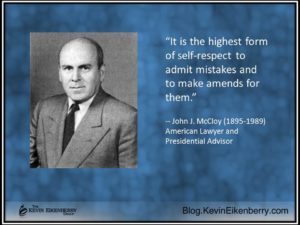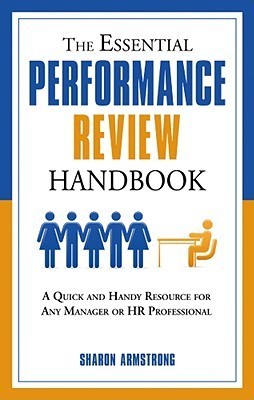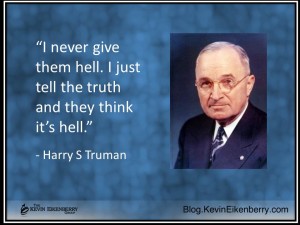Ask my team and they will tell you I am full of (too many?) new ideas, and ask me and I will tell you that we don’t always innovate as much as I would like. Thinking about this paradox on a flight yesterday led me to look squarely at me. After all, if we aren’t innovating as much or as effectively as I’d like, the burden of changing that starts with me.

As I thought about it, I kept hearing Jack Nicholson’s voice, as Colonel Nathan Jessup in the movie A Few Good Men (pardon me for the paraphrase)
“You don’t want the truth because deep down in places you don’t talk about at parties, you don’t really want innovation. You use words like creativity, and new products, and supporting ideas, and making a difference. You talk a good story, but your actions prove something different.”
Ok, so do you want the truth? Can you handle the truth?
The truth is that many of my/your actions as a leader may run directly counter to supporting the innovation you claim to desire.
You say you want innovation, but you ask people to market the existing product harder, to make this month’s numbers.
You say you want innovation, but you aren’t willing to invest the time and resources for your team to really explore new opportunities.
You say you want innovation, but you lead too many conversations with “no.”
You say you want innovation, but you still use the legacy systems you’ve always had.
You say you want innovation, but you never listen to new ideas.
You say you want innovation, but you never create time for the team to brainstorm and let ideas ferment and grow.
You say you want innovation, but you punish mistakes.
Yep, I said punish mistakes.
And can you have real innovation without mistakes?
Of course not.
In order to create and implement something new, you won’t get it right every time. You will hit foul balls and you will strike out, maybe multiple times, before you hit a home run (or even a single).
How long has it been since you had a team member tell you about a mistake they made? If it has been more than a few days, one of two things is happening:
- They aren’t making any mistakes (which means they aren’t learning and certainly aren’t innovating).
- They are making them and not telling you.
Both of those things are happening because your team “knows” you don’t want or welcome mistakes. And as it turns out this issue is stifling learning as well as innovation – a double whammy mistake!
So back to Jack. The truth is, if you aren’t getting the innovation you want, start with you. Do your words AND actions show that you really value and want innovation? Before you try to implement all the other great ideas in this issue, you might want to ponder that question for a bit.
Next week, I will give you some ways to support innovation with your teams. But for now, look in the mirror. If you aren’t getting the innovation you desire, you may be looking at the biggest problem you face.


















